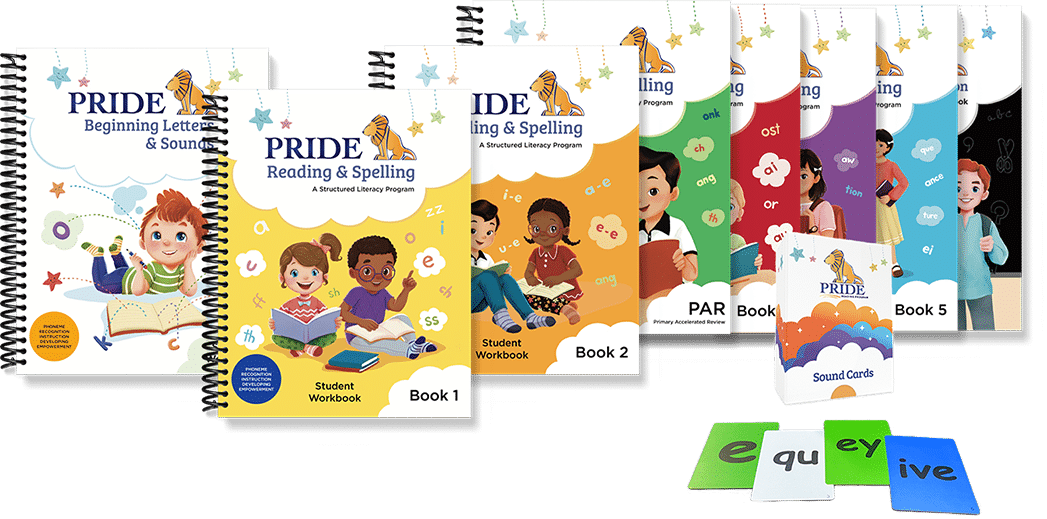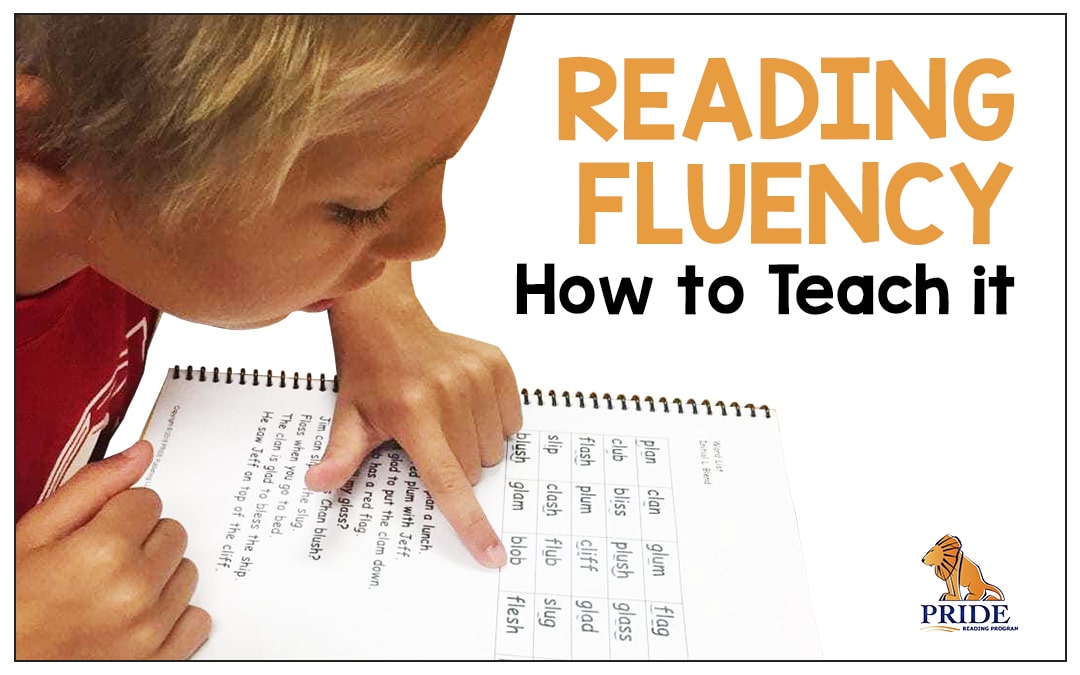Reading fluency is the ability to read accurately, quickly, and with expression. Oral reading fluency is a critical component required for successful reading comprehension, which is the ultimate goal of reading. Students who read fluently are more likely to comprehend material because they are able to focus on the meaning of the text instead of sounding out each syllable (decoding). So how can you explicitly teach your student to read fluently? Here are some teaching strategies that will help your student build fluency skills.
How Do I Find My Student’s Reading Level?
Reading fluency practice is best carried out with books or reading passages that are at the student’s reading level. You will first need to determine your student’s reading level. One of the easiest ways to do this is the Five Finger Rule.
You will start out by having your student read a page in a book, and you will put down one finger each time your student struggles with a word. If your student reaches the end of the page before you get to five fingers, the text is written at the perfect level for independent reading and also practicing reading fluency.
Here is a short video I made for you on how to find your student’s reading level.
How Do I Assess My Student’s Reading Fluency?
Once you determine your student’s reading level you will want to test your student’s reading fluency. There is a really easy way to test this, and here is how it goes:
- Ask your student to read a grade-level passage that they have never seen or read before. (DIBELS has excellent grade-level reading passage assessment you can use.)
- Using a timer have your student read this text for one minute.
- While reading the passage, tally the errors your student makes while reading.
- Stop your student after one minute. Count the number of words read in the minute and subtract any errors made by your student. For example: if they read 120 words in a minute and made five errors then your student’s reading fluency rate is 115.
- Use the chart below to determine if your student’s reading rate is on target.
| Grade | Fall Target | Winter Target | Spring Target |
| 1 | Not applicable | 20 | 50 |
| 2 | 50 | 70 | 90 |
| 3 | 70 | 90 | 110 |
| 4 | 95 | 110 | 125 |
| 5 | 110 | 125 | 140 |
| 6 | 125 | 140 | 150 |
| 7 | 125 | 140 | 150 |
| 8 | 130 | 140 | 150 |
Johns, J. and Berglund, R. (2006). Fluency strategies and assessments. Dubuque, IA: Kendall/Hunt Publishers.
How Do I Teach Repeated Reading?
Repeated Reading is a practice that involves having the student read the same text over and over again until the reading is fluent and error-free. This strategy is very simple to use and can be done with any story, book, or text that is at the student’s reading level.
The steps for Repeated Reading are as follows:
- Select a passage, story, or text that is at the student’s reading level.
- Set a goal for the student that is 40% above the student’s most recent fluency score.
- Time the student reading for one minute.
- If the student meets the goal, move on to another passage, story, or text.
- If the student does not meet the goal, have the student continue with the Repeated Reading.
- The student can graph their progress for motivation.
- The teacher or parent can use the graph to measure reading fluency progress.
When using repeated reading, have your student practice reading the story or passage with emotions, such as excitement or sadness to emphasize reading with expression and intonation. You will soon see that the speed and accuracy of your student improves.
How Does Reading Aloud Help Reading Fluency?
Make a habit of reading together each day with your student. Start out by having your student read aloud to you for at least 20 minutes. The more that your student reads, the better they will get. Practice, practice, practice! With each book, your student will become faster, more confident, and use more expression.
After your student reads aloud to you, you will need to read aloud to your student for at least 20 minutes. If your student hears examples of fluent reading they are much more likely to understand how to apply fluency into their own reading. When reading aloud, let your voice reflect the tone of the story and the personalities of the main characters. Try not to read too fast, allow your student to think about what is going to happen next and visualize each part of the story.
How Do Sight Words Help With Reading Fluency?
Memorizing sight words is an important step in improving reading fluency with your student. By memorizing common words like “the”, “said”, “what”, and “you”…your student will instantly recognize them in a text without having to take the time to sound them out. When students master sight words, they no longer have to stop and blend the letter sounds together or think about spelling rules. Mastering these words frees up the focus for reading harder and less frequently encountered words.
Sight words are in almost everything that we read. It is therefore important to practice sight word fluency to help your student understand sentences and therefore also help with reading comprehension. Reading daily will naturally reinforce the learning of sight words, but you can also get creative with activities and games to help memorize them. For activities on teaching Sight Words, read my previous post:
I Have a Resource For You!
Thank you for reading my post today. You might also enjoy reading my previous posts:
How To Teach Letters and Sounds Correctly
Please don’t leave without checking out the PRIDE Reading Program. The PRIDE Reading Program is an Orton-Gillingham curriculum that is used by teachers, tutors, and homeschooling parents worldwide with great success.


Karina Richland, M.A., is the author of the PRIDE Reading Program, a multisensory Orton-Gillingham reading, writing, and comprehension curriculum that is available worldwide for parents, tutors, teachers, and homeschoolers of struggling readers. Karina has an extensive background in working with students of all ages and various learning modalities. She has spent many years researching learning differences and differentiated teaching practices. You can reach her by email at info@pridereadingprogram.com or visit the website at www.pridereadingprogram.com

